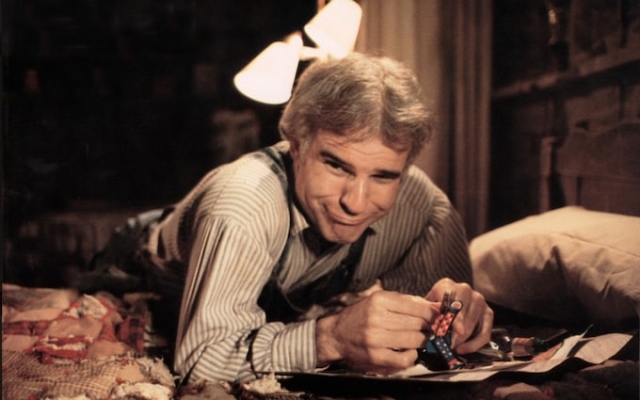 Steve Martin in The Jerk Photo: Alamy
Steve Martin in The Jerk Photo: Alamy
In July 1979, five months before the release of The Jerk, Steve Martin is the theme of the new Apple TV+ documentary, and director Carl Reiner gave a brilliant premiere. Not for the movie, but for the trailer.
Held at the Village Theater in Westwood, Los Angeles, it was what Martin and Reiner described as an «unprecedented event»: rotating spotlights, a marching band with fanfare and more than 500 guests, some of whom lined the red carpet in suits. bunny ears and arrows to the head are signature props from Martin's mania-inducing performances. The newspapers indicated that this event (the joke seems to have been lost in the news feed) occurred between 20:00 and 20:02. After the first six seconds, no one sat down. Dress was optional. «But they preferred it.»
Steve Martin, who arrived in a limousine and wearing a black tie, spoke with reporters. «We're tired of fake Hollywood premiere parties,» he said. “We decided that we would have a real premiere with real people.” Martin explained that the Jerk trailer received a «ugh» rating and that the production was a general success. “We were able to complete it on budget and on schedule,” he confirmed. “I believe we saved $94.” In the theater, Martin gave a speech and began to cry. “I can honestly say that these are the most exciting two minutes of my life.”
This blow to Hollywood's ego was the kind of showy stupidity befitting Martin's character in The Jerk, Naveen R. Johnson. He's not so much a real jerk as he is a slacker — a self-aware naive. Growing up black in Mississippi, Naveen doesn't even know he's adopted. “You mean I’ll stay in this color?!” Naveen cries when he learns the truth from his mother. Michael Elias, who co-wrote the film with Steve Martin and Carl Gottlieb, still chuckles at the line. “It's one of the greatest lines in comedy history,” says Elias.
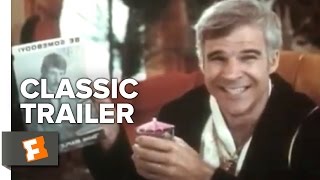
The Jerk was a career moment Martin, which effectively connects the two halves of the new Apple TV+ documentary, STEVE! (Martin) Documentary in two parts, directed by Morgan Neville.
First half of STEVE! tells the story of his rise to stand-up comedy megastar, a stadium-filling cultural phenomenon. “He drew 10,000 people to his concerts,” says Elias, who wrote material for Martin’s live performance and witnessed it firsthand. “He was like a rock 'n' roll comedian. He was the first.» The other half of STEVE! talks about Martin's film career and the impact it had on his personal life.
Snatch was filmed at a time when Martin felt he could no longer be truly creative in stand-up — that his enormous popularity was a «fad» that would soon end — and this convinced him to leave stand-up for movie stardom. He found his special purpose. But that understates what The Jerk really is: one of the funniest comedy films ever made.
When Steve Martin started writing The Jerk — first with Carl Gottlieb — he didn't have much of an idea other than to just be funny. Gottlieb (who also wrote the screenplay for Jaws) remembered them sitting there for days on end, just staring at a blank page. The inspiration ultimately came from a line from Martin's speech that always brought laughter: «I was born a poor black child.» This idea has not lost its absurdity in 45 years. “There was no whiter man than Steve,” Carl Reiner told Nick de Semlien, author of Wild and Crazy Boys, about the 1980s comedy stars. “He even had gray hair.”
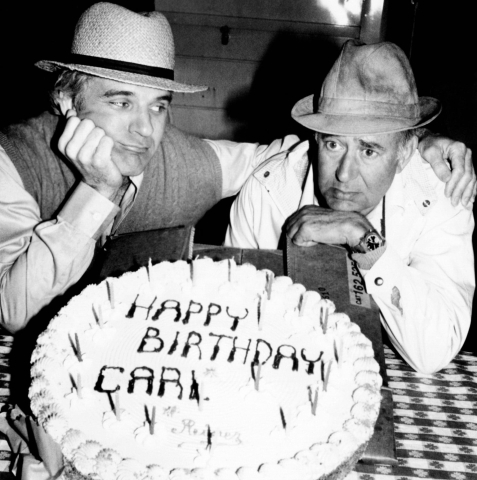 Steve Martin and The Jerk director Carl Reiner celebrate Reiner's 57th birthday on set in 1979. Photo: Alami
Steve Martin and The Jerk director Carl Reiner celebrate Reiner's 57th birthday on set in 1979. Photo: Alami
In the final film, Naveen's calling comes when he finally finds his rhythm. Instead of clumsily snapping your fingers to the blues: “There’s something about these songs, they depress me!” – but when he hears some sickly white elevator music on the radio. «It's talking to me!» he states. “If it’s out there somewhere, think how many more are out there!” Naveen goes out into the world to achieve something, but not before his family teaches him a few life lessons, including «don't trust Whitey» and how to tell sh*t from Shinola.
Jerk was originally developed at Paramount and was called Easy Money. Martin told Reiner that he thought the title should be “something short but still have the feel of an epic story. Like Dostoevsky's The Idiot, but not this. Like «Jerk.»
Paramount abandoned the film after a change in management, and Universal picked it up instead. By this point, Gottlieb had moved on to another project, so Martin asked Michael Elias to work with him on the rewrite. Elias went to Aspen, where Martin was living at the time. They skied during the day and wrote a script at night.
Elias is now a writer. His latest book, You Can Go Home Now, is a thriller that «tackles the issue of the anti-abortion terrorist movement,» the writer says.
In looking back at The Jerk, Elias credits the partial collaboration between himself, Martin, Gottlieb and Carl Reiner, as well as non-interfering producers David Picker and William E. McEwan. There was no studio interference, no notes, no compromises. “We didn’t know we were making a classic comedy,” Elias says. «We approached it like, 'We're making a movie!' Only we felt free to do whatever we wanted. I don't know if you can do that anymore—make a movie where you say, «We don't listen to anyone.» Perhaps that is why it is so well preserved.”
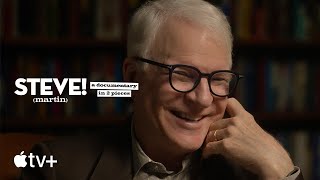
Martin later admitted that while working on The Jerk, he did not yet know the rules of writing scripts. Like Naveen, he was naive about the new world in which he lived. “His vision was all about laughter and jokes,” Martin said on the So Many Steves podcast. «But it wasn't a vision of a film, it was a vision of something else, just putting comedy on screen.»
Indeed, rather than following a standard film structure, The Jerk is an odyssey of staged life chapters driven by a series of odd jobs: a gas station attendant, a carnival weight guesser, a miniature train driver, an unsuspecting inventor. Meanwhile, he loses his virginity to a hardened stuntwoman who tattoos his name on her back (“I bet more people will see this than the phone book!”) and falls in love with the sweet-voiced, doll-faced Marie, played by Martin. then-girlfriend Bernadette Peters. (One job that didn't make it into the final script was the «buffalo counter» — standing on the street in Beverly Hills and counting all the buffalo that passed by. After a few days, a buffalo would finally appear. «One,» he said. your clipboard.)
Naveen's ambitions are modest. You just need to enter his name in the phone book. “Millions of people view this book every day! It’s this kind of spontaneous advertising – your name in print – that makes people!” He becomes an overnight millionaire when he invents the Opti-Grab, a small handle that hangs on the temple of his glasses, but loses his fortune when the Opti-Grab starts confusing people. For Elias, «The Jerk» was part of the great American tradition of rags to riches stories (then rags to riches again in Naveen's case).
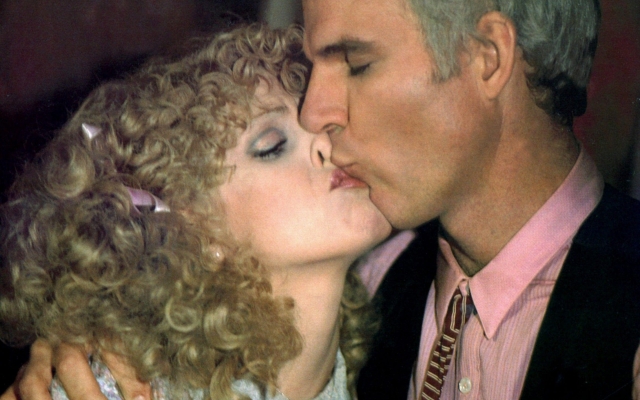 Bernadette Peters and Steve Martin in the movie «The Jerk.» Photo: Alami
Bernadette Peters and Steve Martin in the movie «The Jerk.» Photo: Alami
As detailed in STEVE! In documentaries, Martin's stand-up marked a shift in comedic philosophy that went against the grain of the cultural moment. Other comedians in post-Vietnam and post-Watergate America had dabbled in politics and satire, but Martin's act was an expression of unbridled, natural, utter stupidity—he talked about Bananaland and jiggled his legs cheerfully while wearing a rubber nose and a balloon hat. A wild and crazy guy, as he put it.
In the first part of STEVE! he explains that his initial approach to stand-up was to move away from the formalities of comedy—the unspoken contract in which comics created the tension of a joke and released that tension. tension with a climax that means it's time to laugh. “What if I create tension and never release it?” he talks about creating his act. “I strived for this quality that cannot be defined. Where you said, «I don't know why it was funny, but it was.»
The same applies to «The Jerk,» which satirizes the form with sustained comedic tension. The laughter is endless and comes in all forms: physical slapstick, abstract asides, conceptual buffoonery, silly songs, one-liners, good old-fashioned swearing and straight-up, bulletproof jokes. “Damn, Shinola,” Naveen says, realizing the difference, and then walks through the steaming pile of the former. Other personal favorites: his faithful canine companion S—Head; cat juggling; and the hanging defense of Iron Ball McGinty (who is actually played by Gottlieb).
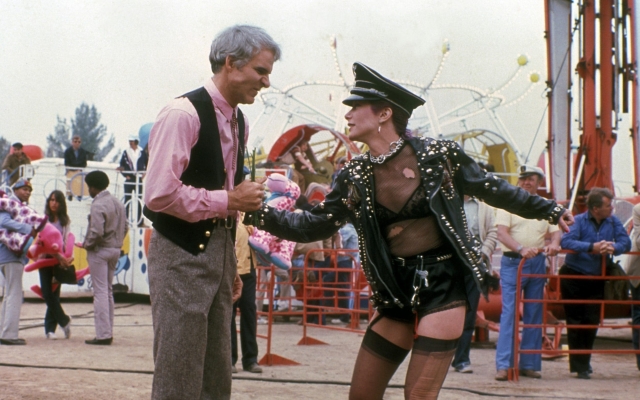 Steve Martin discovers his 'special goal' in the movie «Idiot» Author: Alamy
Steve Martin discovers his 'special goal' in the movie «Idiot» Author: Alamy
Laughter hangs in the air almost every second of the time watching «The Jerk,» as the sensitivity of Martin's performance becomes its own reality. “This film was the pinnacle of my little acting skills,” Martin wrote in his memoir, Born Standing Up. Unlike, say, Airplane—one of the few comedies that counters the laugh-for-laughs-for-laughs of The Jerk—it's not about the ridiculousness played out straight. Martin plays the whole thing ridiculously. In «Jerk» the rest of the world is his straight man.
Many of Martin's favorite jokes in The Jerk came from bantering with Carl Reiner as they drove back and forth from the studio in the car. Martin, presenting the film to the American Film Institute in 2008, recalled how he and Reiner laughed the whole way through at his favorite joke. When Naveen is hitchhiking, a truck driver offers him a ride. «Saint Louis?» — asks the driver. “No,” Naveen replies. “Naveen Johnson.”
Reiner also liked it when Martin made up material on the fly. After each take, Reiner asked, “Do you have anything else, Steve? Is there anything else cooking in your head?”
Reiner, a veteran comedian, became something of a mentor and frequent collaborator for Martin early in his film career. He also directed Martin in Dead Men Don't Wear Plaid, The Man with Two Brains and All of Me. In «The Jerk», when Naveen and Marie are about to kiss for the first time, it is Reiner who quietly suggests that instead of kissing, Martin should surprise Bernadette Peters by licking her face. «What's amazing is that you can see it's about to break, but it doesn't,» says Michael Elias. “Bernadette Peters is brilliant in this film. Really fucking great.»
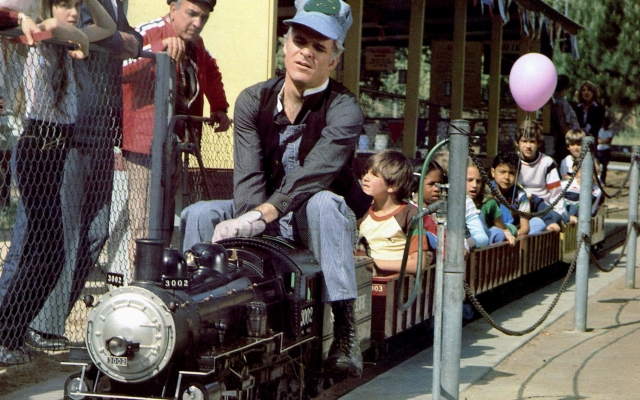 Steve Martin in The Jerk Posted by Alamy
Steve Martin in The Jerk Posted by Alamy
Another of Martin's favorite moments is more cute than funny: a moonlit version of «Tonight You Belong to Me» as they stroll along the beach with Naveen on ukulele and Marie on cornet. (Although not without laughing. Navin dreams of getting into Marie’s cornet, crawling through the valves and kissing her on the lips. “Why didn’t you do that?” she asks him. “I didn’t want to be spat on,” he says.) Martin remembered waiting for this scene to be shown at the pre-show, hoping that audiences would like it. Instead, they left the hall to buy popcorn. However, it contains notes of romance and sentimentality that became part of Martin's later films.
It also says something about “The Jerk,” who, like Naveen Johnson himself, is completely candid and uncynical. Perhaps that's why «The Jerk» gets away with material that would normally be fodder for cancel culture, especially Naveen, who grew up as a poor black kid. In a 2019 interview, Carl Gottlieb admitted that «The Jerk» has «a lot of very innocent but racist tropes,» although he stressed that «The Jerk» «never acted with malicious intent.» Michael Elias remembers riding in a taxi and telling the black driver about The Jerk. “I said it’s about this guy who’s adopted by a black family and thinks he’s black and grew up black,” Elias says. “The guy said: “Wow, this is hard!”
In another scene, Naveen is targeted by a crazed gangster played by the late Emmett Walsh. The active shooter joke should be uncomfortable in 2024—when the idea is little more than a stupid sketch—but it's so ridiculous that it works. The gunman randomly selects Naveen's name from the phone book and takes aim, causing an oblivious Naveen to shout out perhaps the funniest line in the film («He hates those banks!»). The shooter appears later and explains the assassination attempt. “It was the old me… I had a bad marriage and I just quit smoking.”
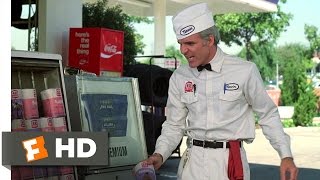
Some of The Jerk's best material comes when Naveen becomes pompously and filthy rich by inventing the Opti-Grab. Newly minted Naveen weighs down his neck with gold chains, drinks Château Lafite-Rothschild straight from the water cooler and eats at posh restaurants — although he is horrified when he orders escargot and finds snails on his plate. “You would think that in such a fashionable restaurant, for such prices, there would be no snails in the food!”
Naveen's Beverly Hills mansion is a bastion of bad taste, with revealing artwork, a pink chiffon swivel bed with zebra stripes, a clam-shaped bathtub, an all-red pool room with a stuffed camel and a separate disco. Incredibly, the 38-room mansion was real. “The house was crazy,” Elias says. “There really was a stuffed camel.”
Located on Sunset Boulevard, it was owned by Saudi Sheikh Mohammed Al-Fassi, whose fortune is estimated at $6 billion. Al Fassi outraged neighbors with his flamboyant decor. He painted the mansion a color called «rotting lime» and painted statues (including their genitals, as well as fluffy pubic hair) on the front porch. The studio rented the house for $50,000 a week, eliminating the need to decorate the house from scratch.
The most memorable scene from «The Jerk» occurs after Naveen loses his fortune to cross-eyed glasses wearers (Carl Reiner as himself, one of the many people mowed down by the Opti-Grab). In a joke recorded on Martin's stand-up routine, Naveen emerges from his mansion a broken man, declaring that he doesn't need anything. Except for an ashtray, a remote control, a ball game, some matches, a lamp and a chair. “That’s all I need!”
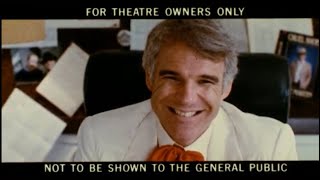
There is intelligence behind the stupidity — even outside the film. When Martin and Reiner premiered their trailer, the joke didn't end with silly fanfare. The smartest thing was to show not even the real trailer, but a fake trailer «for theater owners only» in which Martin spoke directly to the camera, promising the theater bosses that «The Jerk» would be a real «moneymaker» and they were all in the Bahamas before how the public realized that they had been deceived. He paid off critics to ensure box office success, included blue expressions to keep audiences happy, and inserted a boring bit in the middle to make audiences (a «bunch of idiots») buy more popcorn. “You’re welcome,” Martin said, smirking. «A gift from Steve.»
There was one person who was present for the shenanigans in the trailer who wasn't impressed (at least he didn't): Bill Murray. Murray had a small cameo in The Jerk, playing an interior decorator, but the role was cut, an issue Murray raised when he jokingly reviewed the film on Saturday Night Live. “The film is a dog. Something is missing». Murray's joke wasn't the only bad review. In his memoirs, Martin recalled that The Jerk received «a single good review from a small newspaper in Florida» but «dismissive and sadistic reviews from the rest of the country.» Even Martin's father dismissed his son's performance after a preview screening: «Well, he's no Charlie Chaplin,» Martin's father told a friend. However, The Idiot, released in December 1979, was a hit, earning $73.7 million.
Forty-five years later, The Idiot is still unusual—both a comedy classic and an unusual film. track. A film that most serious comedy fans seem to know and appreciate.
Michael Elias attributes his success to Martin's stand-up routine. Not only because of the material and comedic sensibility borrowed from his performance, but also because of the need to make people laugh from the very beginning. “If you don't go out and make people laugh, you've failed,” Elias says. “For Steve, as a comedian, it was a matter of life and death. He made sure that we all took on this responsibility. To make it funny.”
Steve Martin, “Documentary in Two Parts,” airs on Apple TV+ today























































Свежие комментарии